European Rabbit
- December 26, 2023
- 0 comment
The European rabbit, scientifically known as Oryctolagus cuniculus, is a small mammal that has become an integral part of ecosystems across Europe. Conflicts arise due to their propensity for burrowing, which can lead to land degradation and pose challenges for agriculture. Farmers often grapple with the impact of rabbit populations on crops, prompting the need for effective management strategies to mitigate these conflicts.
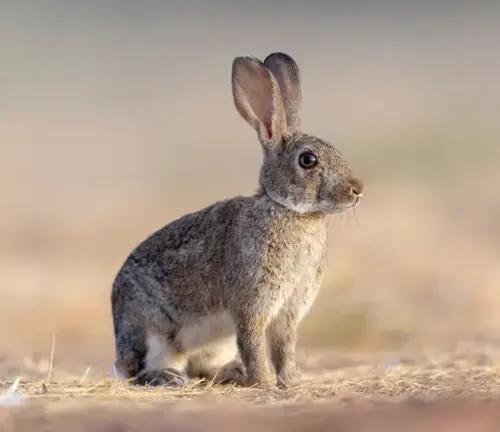
In terms of legal status, the European rabbit is not uniformly protected or considered invasive across all European countries. Legal frameworks differ, with some nations implementing conservation measures to protect the species, while others view it as a pest and permit control measures. Striking a balance between conservation and agricultural interests remains a complex challenge.

Identifying European rabbits is facilitated by their distinctive features. They typically have soft fur with shades ranging from gray to brown, and their distinguishing long ears and robust hind legs aid in quick recognition. The white underside of their tails further aids in differentiation, making them easily identifiable in various habitats.
The physical description of the European rabbit includes a compact body, strong hind limbs, and a short tail. Their adaptability to diverse environments has contributed to a widespread species range, encompassing grasslands, forests, and urban areas across Europe. This adaptability, however, has intensified human-wildlife conflicts, especially in areas where rabbits encroach upon agricultural lands.
Health and safety concerns related to European rabbits primarily revolve around diseases that can affect both wild and domestic populations. Rabbit hemorrhagic disease and myxomatosis are notable examples, posing threats to both wild rabbit populations and domestic rabbitries. These concerns underscore the need for comprehensive monitoring and management strategies to maintain a balance between the ecological role of European rabbits and potential risks to human interests and animal health.
| Aspect | Description |
|---|---|
| Scientific Name | Oryctolagus cuniculus |
| Size | Small mammal with a length of about 40-50 cm |
| Weight | Typically weighs between 1-2 kg |
| Fur Color | Varied, ranging from gray to brown |
| Ears | Long and upright |
| Hind Legs | Strong and well-developed |
| Tail | Short with a white underside |
| Habitat | Adapted to diverse environments, including grasslands, forests, and urban areas |
| Range | Native to Europe; introduced to other continents |
| Behavior | Nocturnal; burrows for shelter and nesting |
| Legal Status | Varies across European countries, some protect as a species, others consider it a pest |
| Conflicts | Agricultural conflicts due to burrowing and crop damage |
| Health Concerns | Susceptible to diseases like rabbit hemorrhagic disease and myxomatosis |
| Conservation Status | Considered a species of Least Concern by the IUCN |
Exploring the Life of the European Rabbit
General Biology

The European rabbit, scientifically known as Oryctolagus cuniculus, is a fascinating creature with a diverse range of characteristics. These small mammals typically measure between 40-50 cm in length and weigh around 1-2 kg. Adorned with fur that spans a palette of grays and browns, their unmistakable long ears and powerful hind legs contribute to their distinctive appearance.
Reproduction
Reproduction plays a vital role in the life cycle of the European rabbit. Known for their prolific breeding, females, or does, have the capacity to produce several litters per year. Gestation lasts around 30 days, and a single litter can consist of multiple kits. This remarkable reproductive capacity has contributed to the species’ widespread distribution.
Behavior
The behavior of European rabbits is a captivating aspect of their biology. Primarily nocturnal, these creatures emerge under the cover of darkness to forage for food and engage in social interactions. Their strong hind legs enable swift and agile movements, aiding in both escape and territorial displays.
Nesting/Denning Cover
European rabbits are adept burrowers, creating intricate warrens for shelter and nesting. These burrows serve as a sanctuary from predators and provide a secure environment for raising their young. The interconnected tunnels also facilitate social interactions and contribute to the complex structure of rabbit communities.
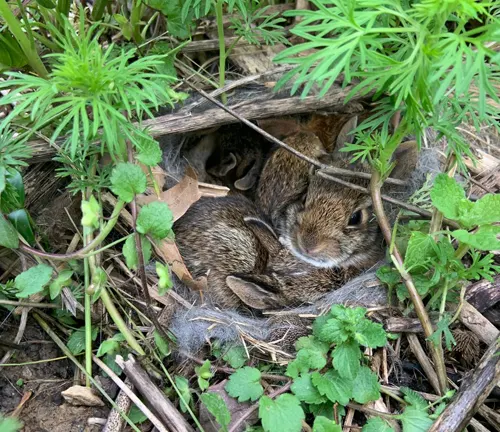
Habitat
Adaptable to a variety of environments, European rabbits inhabit diverse landscapes, including grasslands, forests, and even urban areas. Their ability to thrive in different ecosystems has led to both positive and negative interactions with human activities, making them a species of ecological and agricultural significance.
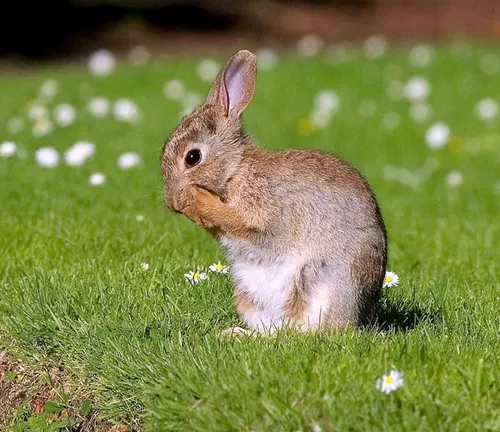
Food Habits
The dietary habits of European rabbits are herbivorous, and they consume a variety of vegetation such as grasses, herbs, and bark. Their feeding habits can have significant impacts on local flora, especially in regions where rabbit populations are dense. Balancing their dietary needs with environmental conservation remains a crucial consideration.
Voice, Sounds, Tracks, and Signs
While European rabbits are not known for vocalizations, they communicate through body language and thumping their powerful hind legs on the ground as a warning signal. Tracks and signs, such as distinctive footprints and fecal pellets, provide insights into their presence and behavior in a given area. These silent cues play a vital role in tracking and understanding rabbit populations.
A Closer Look at Damage Across Different Fronts
Damage Identification
Identifying the impact of European rabbits is a critical first step in understanding the challenges they pose. Rabbit activity leaves behind distinctive signs, from burrows and tracks to gnawed vegetation. Recognizing these indicators is essential for implementing effective mitigation strategies and managing the coexistence of these creatures with human activities.
Damage to Landscapes
European rabbits, with their penchant for burrowing, can significantly alter landscapes. The intricate network of burrows not only affects the stability of the soil but also contributes to erosion in certain environments. The cumulative impact of extensive rabbit warrens can lead to changes in vegetation patterns and disrupt the balance of local ecosystems.
Damage to Crops and Livestock
Agricultural communities often bear the brunt of European rabbit activity, as these herbivores have a voracious appetite for crops. From cereals and vegetables to fruit orchards, the list of vulnerable crops is extensive. Beyond the direct consumption of agricultural produce, rabbits can also compromise the integrity of fencing and pose indirect threats to livestock, making their presence a multifaceted concern for farmers.
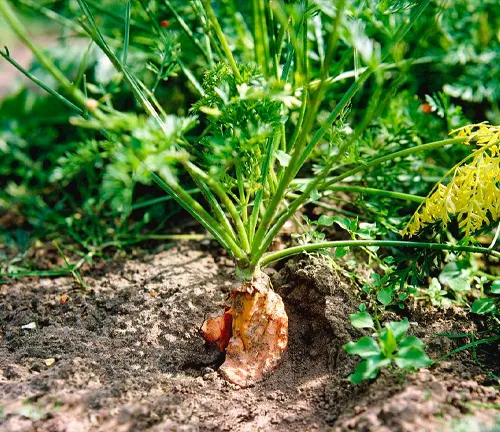
Damage to Structures
The structural impact of European rabbits extends beyond fields and farms. Burrows dug near foundations of buildings, roads, and other infrastructure can compromise their stability. Moreover, the gnawing habits of rabbits pose challenges to wooden structures, wires, and even insulation. This structural damage not only requires costly repairs but also underscores the need for effective control measures to mitigate potential risks.
Strategies for European Rabbit Damage Prevention and Control
Damage Prevention and Control Methods
As communities grapple with the challenges posed by European rabbit populations, a diverse array of methods has emerged to prevent and control the damage inflicted by these prolific herbivores. From habitat modification to targeted removal, each approach plays a unique role in managing the impact of rabbits on landscapes, crops, and structures.
Habitat Modification
One of the key strategies in European rabbit control is modifying their habitat. This involves altering the landscape to make it less conducive to burrowing and breeding. Techniques include filling in burrows, installing barriers, and manipulating vegetation to discourage rabbit activity. Habitat modification not only addresses current infestations but also works towards creating an environment less favorable for future colonization.
Exclusion
Exclusionary measures aim to create physical barriers that prevent rabbits from accessing sensitive areas. Fencing, when appropriately designed and installed, can be an effective means of protecting crops, gardens, and structures. The challenge lies in creating barriers that rabbits cannot easily breach, considering their agility and burrowing tendencies.
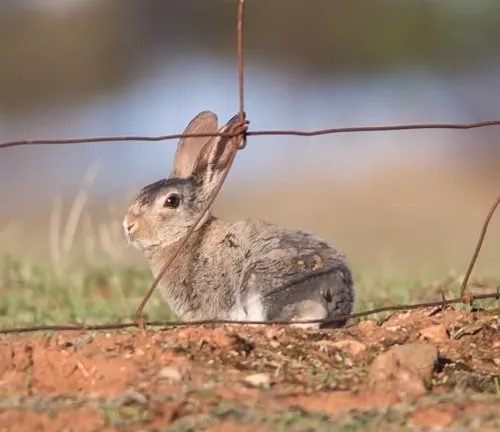

Frightening Devices
Innovations in technology have given rise to frightening devices designed to deter rabbits. These can include motion-activated lights, ultrasonic devices, and even simulated predator calls. The idea is to create an environment that rabbits find inhospitable, encouraging them to seek alternative locations away from the perceived threat.
Repellents
Repellents, both natural and chemical, offer an additional layer of defense against rabbit damage. These substances are applied to plants or surfaces and are intended to deter rabbits through taste or odor aversion. While repellents can be effective, their longevity and efficacy may vary, requiring consistent application to maintain their deterrent effects.
Toxicants
The use of toxicants is a controversial yet sometimes necessary method in rabbit control. Poison baits specifically formulated for rabbits can be strategically placed to reduce populations. However, caution and compliance with legal and ethical guidelines are imperative to prevent unintended consequences and harm to non-target species.
Shooting
Traditional methods of control, such as shooting, continue to be employed in some regions. Skilled marksmanship can help manage rabbit populations, especially in areas where other methods may be impractical or less effective. However, the efficiency of shooting depends on various factors, including terrain and local regulations.
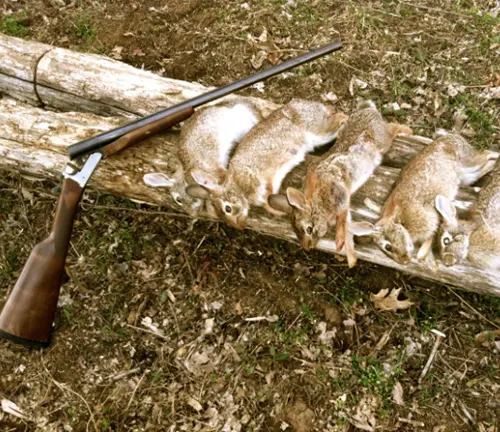
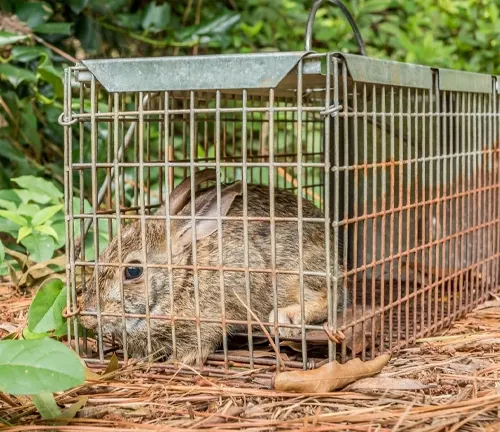
Trapping
Trapping remains a humane and targeted approach to European rabbit control. Live traps capture rabbits without causing harm, allowing for their relocation or euthanasia as necessary. Trapping requires careful placement and monitoring to ensure its effectiveness, making it a method favored by those seeking a balance between control and ethical considerations.
Different Species
Domestic European Rabbit
(Oryctolagus cuniculus)
This is the common domesticated breed of European rabbit, raised for various purposes, including as pets, for meat, and in laboratory settings. It comes in a variety of colors and fur types.
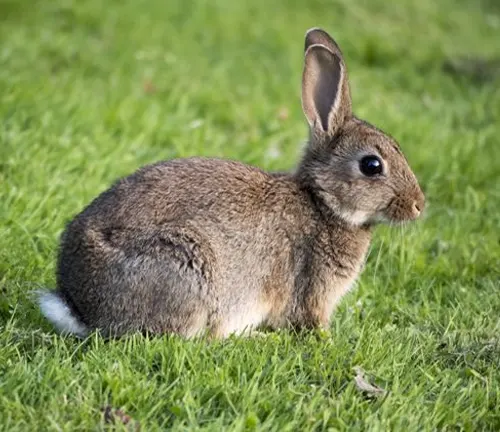
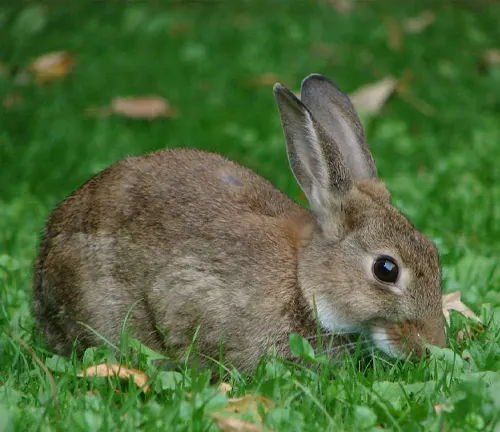
Iberian Rabbit
(Oryctolagus cuniculus algirus)
Found on the Iberian Peninsula, this subspecies is adapted to the Mediterranean climate. It tends to have a slightly smaller size and distinctive features compared to other European rabbits.
Algerian Rabbit
(Oryctolagus cuniculus brachyotus)
Native to Algeria, this subspecies is adapted to arid and semi-arid environments. It is characterized by shorter ears and a stockier build compared to other European rabbits.
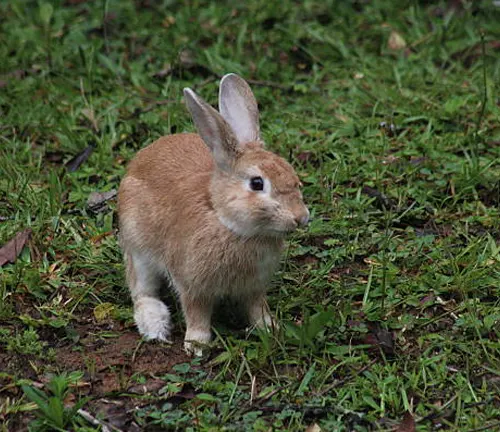
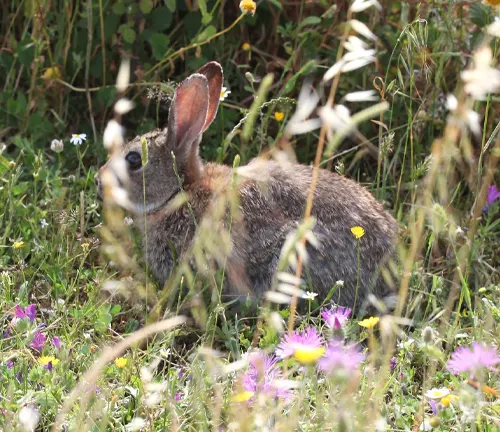
Moroccan Rabbit
(Oryctolagus cuniculus huxleyi)
Inhabiting parts of Morocco, this subspecies displays variations in coat color and markings. Its characteristics may be influenced by the specific ecological conditions of its habitat.
Corsican Rabbit
(Oryctolagus cuniculus corsicanus)
Inhabiting the island of Corsica, this subspecies has adapted to the unique conditions of this Mediterranean island. It may exhibit variations in size and color compared to mainland European rabbits.
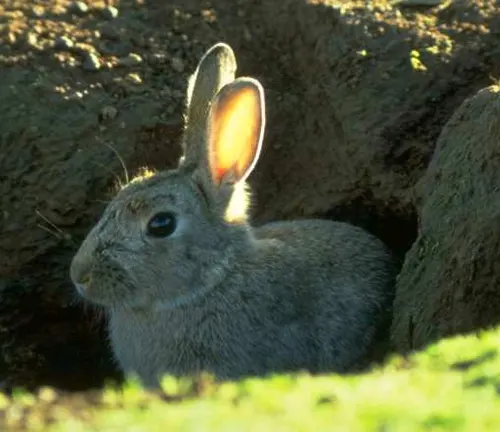
Frequently Asked Questions (FAQs)
- What is a European rabbit?
The European rabbit (Oryctolagus cuniculus) is a species of rabbit native to southwestern Europe. It has also been widely introduced to other parts of the world. - What does the European rabbit look like?
European rabbits typically have a small and compact body, long ears, and strong hind legs. Their fur comes in various colors, including shades of gray and brown. - Where are European rabbits found?
Originally native to southwestern Europe, European rabbits have been introduced to many regions worldwide. They thrive in diverse habitats, including grasslands, forests, and urban areas. - Why are European rabbits considered pests?
European rabbits can be considered pests due to their prolific breeding, burrowing behavior, and herbivorous diet, which can lead to damage to agricultural crops, landscapes, and structures. - How do European rabbits reproduce?
European rabbits are known for their high reproductive rate. Female rabbits, called does, can produce several litters of kits (baby rabbits) per year, with a gestation period of about 30 days. - What is a rabbit warren?
A rabbit warren is a complex system of burrows created by European rabbits for shelter, nesting, and social interaction. These warrens can range from simple to extensive networks, depending on the rabbit population. - What do European rabbits eat?
European rabbits are herbivores and primarily feed on grasses, herbs, bark, and various vegetation. Their diet can have significant impacts on local flora and agricultural crops. - How do you control European rabbit populations?
Controlling European rabbit populations involves various methods, including habitat modification, exclusion through fencing, frightening devices, repellents, toxicants (with caution), shooting, and trapping. - Are European rabbits kept as pets?
Yes, European rabbits are commonly kept as pets due to their friendly and social nature. There are various domesticated breeds with different colors and fur types. - What diseases do European rabbits carry?
European rabbits can be susceptible to diseases like rabbit hemorrhagic disease and myxomatosis. These diseases can impact both wild and domestic rabbit populations.




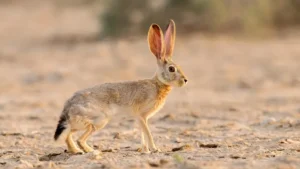

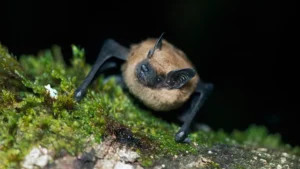


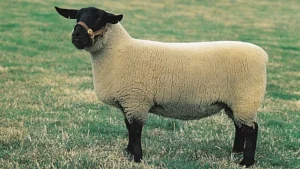

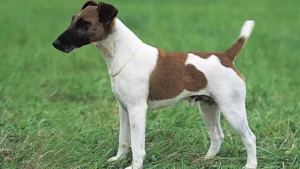

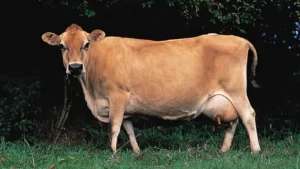
Leave your comment